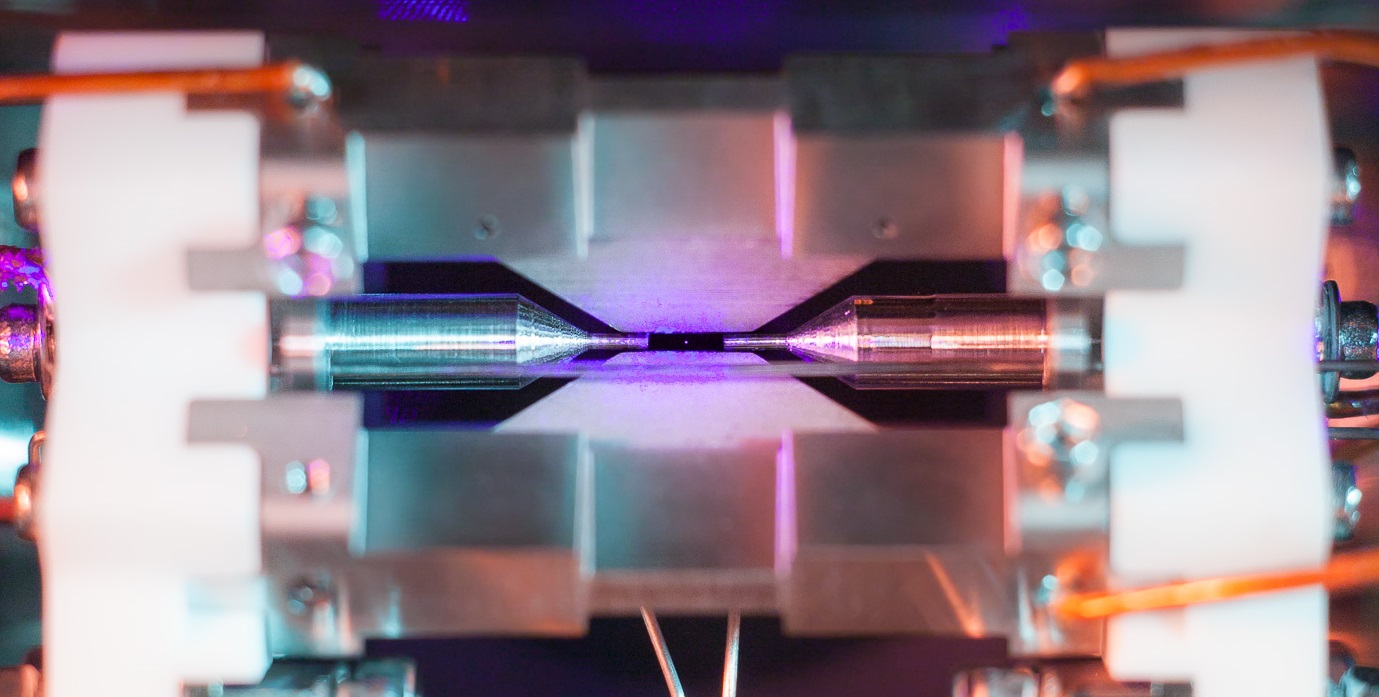www.traphub.org
Ion trap designs and realizations
Background
Quadrupole ion traps (Paul traps) use RF and DC electric fields to confine charged particles. Ion traps come in several electrode designs, depending on their main application. A typical ‘macroscopic’ ion trap, shown below, consists of a set of electrodes arranged in three spatial dimensions:
- 4 rods or blades in an elongated mount (two connected to RF, and two connected to ground), providing radial confinement,
- and two end-caps (both connected to high DC voltage), providing axial confinement.
 </br>
Figure: Photograph of a macroscopic blade trap with a single trapped strontium ion at the University of Oxford. Image credit: David Nadlinger.
</br>
Figure: Photograph of a macroscopic blade trap with a single trapped strontium ion at the University of Oxford. Image credit: David Nadlinger.
These traps allow for the storage of both individual ions and clouds of ions, and are still employed for state-of-the-art quantum optics experiments. However, as people want to trap and control a growing number of ions, a further segmentation of electrodes becomes necessary. Segmented traps can either have a three-dimensional arrangement of their electrodes (3D traps), or their electrodes can be patterned on the surface of a microchip (surface traps).
Overview of trap designs
3D ion traps
Surface ion traps
Definitions and Nomenclature
See the ion-trap-related definitions.
Simulation suite
The simulation suite allows for the automated simulation of trapping potentials of a given trap design and gives details on best-practices regarding the recommended evaluation of these potentials to predict the performance of ion traps. Furthermore, the suite allows for the simulation of electric and magnetic fields emanating from a trap (including the full mount, vacuum chamber, etc), which are requires for certification of traps, e.g. to ensure compliance with health-care or electromagnetic environment standards. Note that compliance simulations need to be additionally cross-checked with experimentally obtained data, before any kind of certification can proceed.